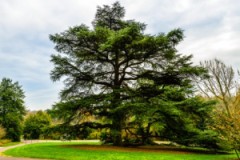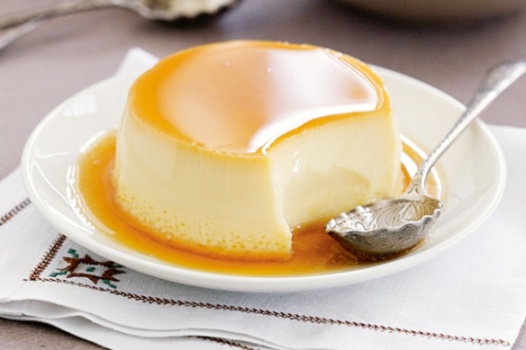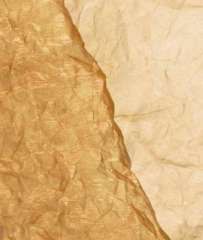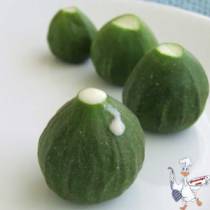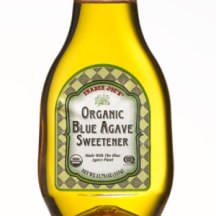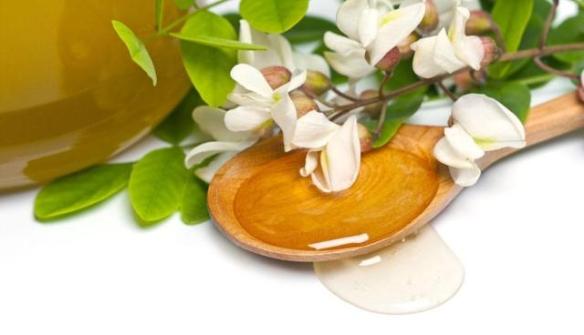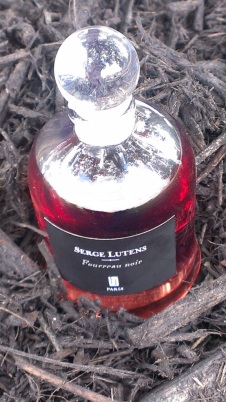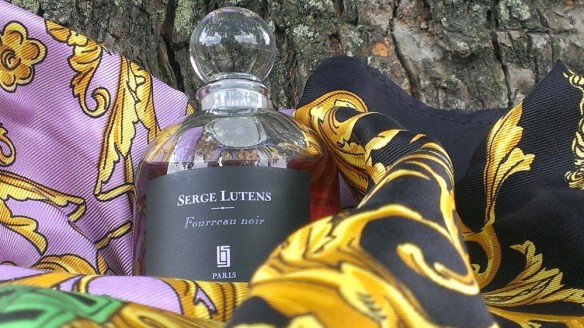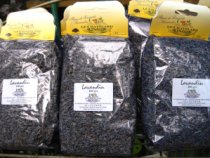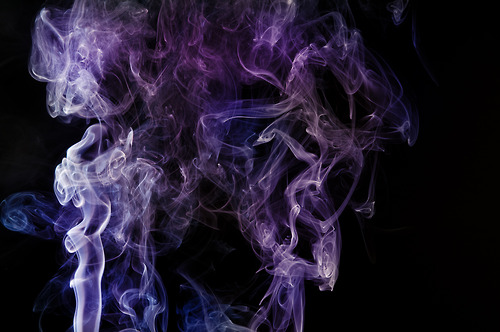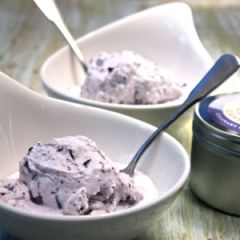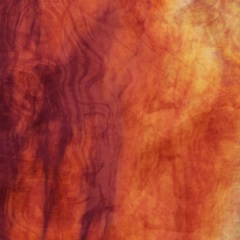 Ambre Muscadin is an unusual fragrance for an amber. It starts off as the dryest, smoked woody fragrance with sharp animalic notes, before ending up as something quite different. Its progression actually reminds me of a horse race where the three dark, woody, smoky, animalic sprinters burst right out of the gate to lead the pack before, suddenly, everything changes. A small, golden, amber gelding and a powerful, creamy, vanilla stallion both surge ahead to tie, neck and neck, with the front-runners, before gradually overtaking them in a long haul. Midway during the race, like Secretariat or Barbaro in days gone by, the mighty vanilla stallion sweeps them all with a flourish.
Ambre Muscadin is an unusual fragrance for an amber. It starts off as the dryest, smoked woody fragrance with sharp animalic notes, before ending up as something quite different. Its progression actually reminds me of a horse race where the three dark, woody, smoky, animalic sprinters burst right out of the gate to lead the pack before, suddenly, everything changes. A small, golden, amber gelding and a powerful, creamy, vanilla stallion both surge ahead to tie, neck and neck, with the front-runners, before gradually overtaking them in a long haul. Midway during the race, like Secretariat or Barbaro in days gone by, the mighty vanilla stallion sweeps them all with a flourish.
Ambre Muscadin is a fragrance from LM Parfums, a French niche house founded by Laurent Mazzone. I’ve met Mr. Mazzone and he is a rather adorable man, with a passion for very classic, but bold, perfumery done with a modern twist. That philosophy is certainly visible in Ambre Muscadin, an eau de parfum (with 15% perfume oil concentration) that was released in 2011. It is unclear who was the nose who collaborated with Mr. Mazzone on the fragrance. Rumour has it that it was the late Mona di Orio, with whom I know Mr. Mazzone was quite close.
LM Parfums describes Ambre Muscadin as follows:
The opulence of the atlas cedar adorned with mystery.
A bold violet, a charmer vetyver rise up its natural elegance.
White honey, lascivious vanilla, highlights its facets flesh and velvety. Then Amber reveals its heart of a sensuous mosaic cryptic, balsamic radiates the charms of the Orient …Top Notes: Mount Atlas cedar, vetiver java, Violet
Heart Notes: Madagascar vanilla absolute, white honey
Base Notes: Siam benzoin, amber, musk
Ambre Muscadin opens on my skin with a ferocious blast of cedar, then vetiver. The notes are all coated with the faintest sliver of vanilla, white honey, amber and a very sharp musk that veers between feeling wholly animalic and, initially, a wee bit synthetic. I must confess, I’m not a particular fan of how Ambre Muscadin begins on me, because it consistently reminds me of some murky cedar swamp, infused with mossy, peaty, smoked vetiver. Once in a while, I think of the cedar chips underlying a hamster’s cage, only this cage is also filled with vetiver, and the whole thing lies under a dome of sharp smokiness, intense dryness, and the feral, urinous whiff of a musky animal. Ambre Muscadin is a very masculine amber on my skin in these opening moments, very much a woody fragrance first and foremost, then animalic, with amber and honeyed vanilla coming in absolutely last on the list.
Five minutes in, Ambre Muscadin slowly begins to shift. The vetiver becomes as prominent as the cedar, and it smells just like the note in really expensive, single-malt Scotch. The mossy, peaty aroma has a slightly burnt nuance, however, and both woody elements merge together to create something definitely quite leathery in feel on my skin. For some odd reason, the overall bouquet sometime reminds me of a significantly less sweet, drier version of Profumum Roma‘s Arso, only with a slightly honeyed tone, sharp animalism, and very little amber. Ambre Muscadin is hardly as thick, dense, sweet or sticky, but there is something about the profoundly dominant cedar focus of both fragrances, along with their smoked sharpness, that feels distantly related.
The impression is fleeting. The amber in Ambre Muscadin starts to rise to the surface ten minutes into the fragrance’s development. Trailing behind it is the honey which most definitely feels like the white, creamy kind. It is a light touch, never very strongly sweetened, and delicately coated with the sheerest breath of vanilla. Like horses in a race, the notes stalk the front-runners, trying to catch up and tame Ambre Muscadin’s sharpness. They don’t succeed for the next 15 minutes, as that pungently feral, almost civet-like, urinous edge fights with the cedar and vetiver for the lead. It’s not my favorite combination in the world, so it’s quite a relief when the fragrance finally starts to mellow about 20 minutes in. The cedar pipes down to a medium hum, the vetiver feels more woody than burnt, and that animalic pungency is lightly diffused by a sweet, golden warmth.
I frequently feel as though I should write the beginning of this review from the perspective of someone other than myself. I’ve sprayed Ambre Muscadin on a lot of people; at no time has it smelled quite so intensely masculine, dry, woody, or sharp on their skin from the opening burst. In fact, on almost everyone, the aroma bouquet which wafts from the first spray is of a dry, but slightly sweet, caramel flan. Women, men…. it’s always caramel flan. Actually, to be precise, it’s rather more like “sexy flan,” to quote my friend and fellow blogger, Caro of Te de Violetas. She deserves full credit for the term, since she was the first to label it as such. And, yes, lest you are curious, there is a difference between regular flan and “sexy” flan, which all comes down to the degree of sweetness or having a subtle heart of dry darkness amidst the golden hues.
I end up with “sexy flan” too, but it always takes me a whole hour to even begin to reach that same point. The first step occurs around the 20-minute mark, when the flan slowly merges into the drier, woody top notes, resulting in a cedar fragrance that is still smoked, but now also softly tinged with caramel amber. It’s not a fluffy, gooey, or dessert-y amber by any means. It is light, filled with a musky, animalic edge, and flecked with creamed honey.
Then, at the end of the second hour, Ambre Muscadin finally metamorphoses into pure caramel flan that sits on a plate with a tiny sauce of dry vanilla and atop a thin layer of white honey. There are the merest lingering, smoky traces of dark cedar and vetiver at the edges. Much more noticeable, but temperamental, however, is the animalic musk which hovers around like a ghost. It rears its head from time to time behind the sweetened amber, then traipses off, before popping back in unexpectedly. The musk continues to linger as a slightly urinous, Jack-in-the-Box undercurrent before it finally gives up near the end of the fourth hour, and vanishes.
By the start of the fourth hour, I smell rather delicious, even if I do say so myself. Delicate, sheer caramel-vanilla amber coats my skin, with a subtle whisper of honey. the bouquet is still too dry and woody to be really “foodie” in nature, though. In fact, the unusual nature of the vanilla element leads me to think that the rumour may, in fact, be true, and that Mona di Orio might have created this fragrance. For one thing, she loved Bourbon Vanilla extract, but often tried to make it rather dry in nature. Something about the amber-vanilla here reminds me of her Ambre, though Ambre Muscadin thankfully never manifests that fragrance’s heavily powdered nature on my skin.
Instead, Ambre Muscadin is a sheer organza of dry, caramel-vanilla, amber flan that continues to feel smoked and somewhat woody in an abstract way. As time passes, the vanilla starts to overtake even the amber, eventually turning Ambre Muscadin into a fragrance that is primarily a dry, abstractly woody vanilla with only the mildest dusting of sweet benzoin powder. It dies away in much the same way, a full 12.75 hours from the time of the first spray.
Ambre Muscadin is very pretty in its secondary manifestation, and lasts a prodigiously long amount of time for such a sheer, airy fragrance. On my skin, it was never unctuous, heavy, thick, or very sweet. The sillage was initially moderate, despite the fragrance’s sharpness, and hovered 2-3 inches above the skin. Ambre Muscadin started to soften after the first hour, in both forcefulness, weight, and sillage. It took about four hours to turn into a skin scent on me, but the perfume clung on tenaciously despite its sheerness.
My favorite review for Ambre Muscadin comes from Caro of Te de Violetas, though I notice her detailed description sadly never mentions the utterly wonderful “sexy flan” phrase. (I absolutely love that summation, and can never think of Ambre Muscadin as anything else since the moment I heard it!) According to Caro, it is indeed Mona di Orio who is behind the fragrance. Her review also finds some thematic similarities to the late perfumer’s Ambre, and it reads, in part, as follows:
Ambre Muscadin brings instantly to mind two other fragrances that I love: Mona di Orio Ambre and Editions de Parfums Musc Ravageur. Deeper, sweeter and more intense than any of those two, it also smells less abstract.
The opening is all about cedarwood at its most opulent and resinous. For a moment, I wonder whether this should be renamed Cèdre Muscadin. A dark, velvety violet briefly peeks from underneath the coniferous greenness. Before I can even realise it, I am carried away by a whirlwind of honey, amber and vanilla. Ambre Muscadin is thick and sweet but the omnipresent cedarwood note cuts through the sweetness keeping it at bay; consequently the composition never becomes cloying. The drydown is powdery and musky, slightly animalic but not excessively dirty.
There is an aura of nostalgia about Ambre Muscadin, but the result is not passé. Nothing in it smells synthetic and I find it wondefully comforting. Its tenacious vanillic embrace holds me for hours on end.
I’m not in love with Ambre Muscadin the way she is, no doubt due to the fact that I had, quite obviously, a very different experience. From the nature of the musk to our perceptions of Ambre Muscadin’s density, to the peaty vetiver in lieu of violet, my version was substantially drier, woodier, smokier, dirtier, and more pungently animalic. There was more of a modern twist on me, with little sweetness, powder, or aura of nostalgia. Yet, I very much agree with the core of her review, and I think she summed it up well. I most definitely share her feeling that the fragrance seems, at times, to be more aptly described as Cèdre Muscadin. In fact, I wrote the exact same thing in my notes. Verbatim. (That should tell you how much the cedar dominates Ambre Muscadin’s opening phase!)
Caro’s experience seems similar to that of Juraj from BL’eauOG who writes:
Ambre Muscadin … is very powdery and woody oriental. Ambre Muscadin is very soft, thick and sweet perfume with generous amber dry down. It feels like the liquid gold on the skin. Opening of Ambre Muscadin is very woody with vetiver, cedar wood and later on, the softness takes over – vanilla, violet, honey notes. Dry down is made of gold because it has beautiful, soft amber and benzoin. For the grand finale, everything is wrapped with musk.
For Lucas of Chemist in the Bottle, things were a little different. For one thing, the musk was as dominant on his skin for the opening stage as it was on mine. It was also somewhat dirty, though it doesn’t seem to have been half as animalic as my experience. His review reads, in part:
Musk plays a significant role in this perfume. It’s sensual and erotic. Not exactly clean as it has some dirtier facets bringing to mind a view of sweaty, sporty body. Amber is luminous here. Not plastic at all but more mineral, slightly marine-salty with a noticeable tones from cedar wood. Later on vanilla and benzoin amplify the amber accord adding it more depth and weight. They add a creamy and slightly gourmand feeling to the composition of Ambre Muscadin. The notes of amber, musk, honey, entwine with each other creating a harmony of aromas.
Most of the people upon whom I sprayed Ambre Muscadin had slightly different experiences from all the above-mentioned bloggers, and even myself. To my surprise, on two of the four people’s skins, the opening had very little cedar and no animalic pungency at all. On one person, Ambre Muscadin was almost entirely a dry, slightly smoky caramel-vanilla flan from the very start. On all of them, I never detected any thickness or strong sweetness. And the sillage was incredibly discrete on two of them after a mere hour, though the longevity was excellent as it usually is for all LM Parfums.
I generally like Ambre Muscadin, but only after its sharp opening has passed. In fairness, however, the perfume seems to be a little bit of a chameleon, with the nature of that starting phase depending largely on individual skin chemistry. While I may not be swooning over the fragrance as a whole, or tempted to reach for it frequently, I do think Ambre Muscadin is well done. If you’re a huge fan of cedar perfumes, Mona di Orio’s fragrance style, and/or dry, woody, amber-vanillas, I think it’s definitely worth a test sniff.
Disclosure: My sample of Ambre Muscadin was provided by Laurent Mazzone of LM Parfums. That did not influence this review. I do not do paid reviews, my opinions are my own, and my first obligation is honesty to my readers.

